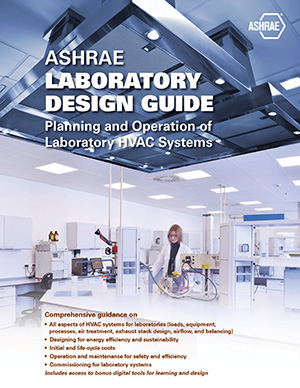
Guidance to Reduce Your Lab's Energy Footprint
This second edition of ASHRAE Laboratory Design Guide is a comprehensive reference manual for the planning, design, and operation of laboratories. It gives engineers, owners, and system operators the design and control strategies they need to reduce the laboratory's energy footprint while ensuring safety, providing good comfort and indoor air quality, and protecting the integrity of laboratory experiments.
The Guide is organized around a typical project, progressing through the basic steps of planning, design, construction, and operation and maintenance. It offers basic background information on laboratories, including their various types and the typical equipment found in them, to provide a basic understanding of laboratories and their importance as well as their different functions and needs.
Purchase
The book covers topics such as exhaust hoods, primary air systems, process cooling, air treatment, exhaust stack design, airflow patterns and system balancing, energy recovery, the laboratory commissioning process, and the economics of both initial and life-cycle costs.
A dedicated chapter gives guidance on laboratories that specialize in biological containment and animal research, addressing envelope design, system reliability, redundancy, proper space pressurization, biohazard containment and control, product protection, and sanitation.
Updated to reflect current standards and industry practices, this second edition also adds two new chapters: one on high-performance building design concepts for sustainability and one with guidelines on evaluating airflow patterns and contaminant concentrations using computational fluid dynamics (CFD) computer modeling.
Finally, included with this Guide are expanded web links to industry standards and resources as well as design tools that help illustrate the features of laboratories and provide practical aids for design.
Related Courses
Laboratory Design: The Basics and Beyond
Laboratory Exhaust Stacks: Safe and Energy Efficient Design
Related Publications
Classification of Laboratory Ventilation Design Levels (Free Download)
ASHRAE Design Guide for Cleanrooms—Fundamentals, Systems, and Performance